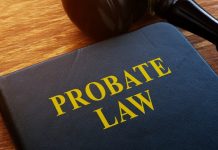If you’re a business owner or director looking to take control of your retirement planning, a Small Self-Administered Scheme, or SSAS, offers more flexibility than most pensions.
One of its greatest strengths is the ability to invest beyond traditional stocks and funds, including assets like physical gold, commercial property, private company shares, and even loans to your own business.
This guide walks you through how to invest in gold and other alternative assets through your SSAS, step by step.
Whether you’re looking to diversify your portfolio or align your pension strategy with your business goals, this article will help you do it properly, and within HMRC guidelines.
How to Invest in Gold and Alternative Assets via SSAS?
Understand What You’re Working With
 A SSAS pension is a type of workplace pension that gives its trustees, typically the directors of a limited company, the freedom to make a wide range of investment decisions.
A SSAS pension is a type of workplace pension that gives its trustees, typically the directors of a limited company, the freedom to make a wide range of investment decisions.
Unlike traditional pensions, which limit you to managed funds or listed equities, this scheme lets you choose from a much broader list of options.
These include commercial property, private loans, unlisted company shares, and precious metals like gold. However, while the flexibility is appealing, it also comes with responsibility. All investments must be made for the long-term benefit of the scheme’s members, and certain asset types are strictly prohibited.
Set Up the Scheme Correctly
If you haven’t already established one, setting up the scheme involves creating a trust, appointing trustees, and registering with HMRC. You’ll also need to open a pension bank account to handle contributions and investments.
It can be funded through new employer contributions or transfers from other pension arrangements such as SIPPs or group schemes. Once the funds are in place, you can begin considering where and how you’d like to invest.
To keep things compliant from day one, it’s strongly advised that you partner with a professional scheme administrator. They’ll help handle the paperwork, advise on eligible investments, and manage the necessary reporting back to HMRC.
Know What You Can Invest In
 With the scheme set up and funded, you can start looking at alternative investments. These typically fall into categories like:
With the scheme set up and funded, you can start looking at alternative investments. These typically fall into categories like:
- Investment-grade gold (not jewellery or collectables)
- UK commercial property (offices, warehouses, or retail units)
- Secured loans to your company
- Unlisted shares in private companies
- Asset-backed lending or peer-to-peer platforms
Each of these has specific rules. For example, loans must be secured and interest-bearing, property must not be residential, and all investments must be made on commercial terms. Anything intended for personal use is off-limits.
How To Add Gold to Your Pension?
Gold can be a valuable part of a diversified pension. It behaves differently from stocks, providing a hedge against inflation and market uncertainty. But if you’re adding gold to your scheme, it has to be done the right way.
Only physical, investment-grade bullion qualifies, typically bars with a minimum purity of 995. You must buy through a recognised dealer and ensure the gold is stored securely in a professional vault. Importantly, it cannot be stored at home or accessed personally.
The purchase must be made in the name of the scheme, and your administrator should be involved at every stage to ensure the transaction meets HMRC standards. Once added, the gold sits within the pension’s holdings and is reviewed as part of your overall portfolio.
Explore Other Alternative Assets
Gold investment isn’t the only option. Many trustees use the scheme to buy commercial premises. If structured correctly, you can even lease the property back to your own company, with rent payments going straight into your pension fund. This can offer both tax efficiency and long-term growth.
You can also use the scheme to make a loan to your business. This must be carefully structured: the amount can’t exceed 50% of the scheme’s net assets, the loan must be secured, and repayment must be made within five years with interest.
Investing in unlisted shares, whether in startups or family-owned businesses, is also possible. These carry higher risk but can provide attractive returns if you know the business well and structure the purchase correctly.
Each of these investment types requires due diligence and clear documentation. As a trustee, you’re responsible for making sure investments support the purpose of the pension: retirement provision.
Stay Compliant and Manage Risk
 While alternative assets offer diversification and control, they also demand more from you as a trustee. That includes keeping clear records, getting professional valuations where required, and ensuring that everything is done at arm’s length.
While alternative assets offer diversification and control, they also demand more from you as a trustee. That includes keeping clear records, getting professional valuations where required, and ensuring that everything is done at arm’s length.
Liquidity is another factor. Unlike shares that can be sold in minutes, gold bars or property might take longer to convert back to cash. It’s important to consider how each investment fits into your broader retirement plan and how accessible the funds are when needed.
This is where your scheme administrator plays a vital role, from checking documentation to advising on structuring and timing, they help keep the pension compliant and aligned with your long-term goals.
Review and Adjust Over Time
Once you’ve invested the money in the fund, your job isn’t finished. Alternative assets should be reviewed regularly as part of your pension’s overall strategy. Markets change, business needs evolve, and rules can be updated.
It’s worth sitting down with your administrator or financial adviser at least once a year to check whether your holdings still serve their intended purpose, and whether there are new opportunities you can take advantage of under the scheme’s rules.
Final Thoughts
Investing in gold and other alternative assets through this kind of pension structure gives you a rare combination of control, flexibility, and tax efficiency.
When set up and managed correctly, it becomes more than a pension, it’s a strategic tool for growing long-term wealth and aligning your business and retirement goals.
But as with any powerful tool, success depends on how you use it. The steps above are designed to help you navigate the process confidently, avoid common pitfalls, and make informed decisions that support both your financial future and the integrity of your pension scheme.





































